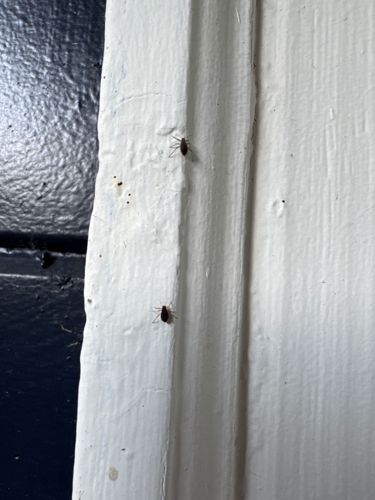Booklouse (or Psocid)
Scientific Name: Liposcelis spp. (among others, depending on specific species)
Order & Family: Order: Psocoptera (also known as Psocodea today for including parasitic lice); Family: Varies (e.g., Liposcelididae, Psocidae). Given the image, likely Liposcelididae, known as 'true booklice'.
Size: 1-2 mm

Natural Habitat
Damp, humid environments such as old books, stored paper, pantries, wall voids, and any area with high humidity and food sources. Often found in homes, libraries, museums, and food storage facilities.
Diet & Feeding
Mold, fungi, starch-based materials (like book bindings, wallpaper paste, flour, cereals), dried insects, and other organic matter.
Behavior Patterns
Booklice are common scavengers. They are generally harmless to humans and pets, but can be a nuisance when present in large numbers. They thrive in damp, humid conditions and feed on mold, fungi, and starches. They often infest old books, pantries, and sometimes new construction with damp materials. Their presence can indicate a moisture problem in a structure.
Risks & Benefits
Potential risks include contamination of food products, damage to books and paper, and occasional allergic reactions in sensitive individuals if populations are very high. They do not bite humans or pets. Generally, they are more of a nuisance pest. They have no significant benefits to humans directly, but in nature, they play a role in decomposition.
Identified on: 8/31/2025